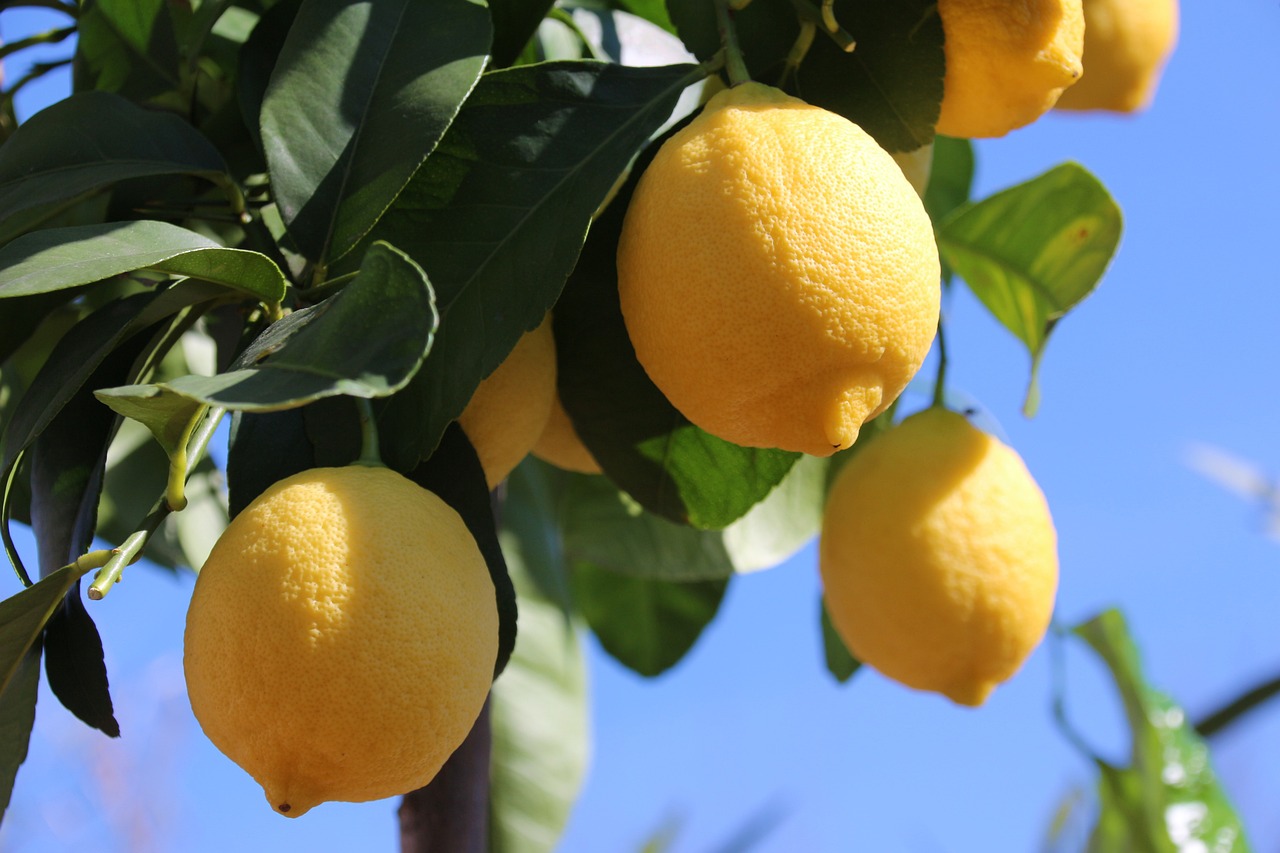How To Grow Lemon Tree Faster?

Growing a lemon tree can be a rewarding experience, not only will it provide you with delicious and juicy fruits but also it has many health benefits. However, it may takes a long time for lemon trees to mature and produce fruit.
Know how to grow lemon trees faster and increase your chances of enjoying a bountiful harvest sooner. With the right care and attention, you can enjoy fresh lemons from your own backyard in no time.
How To Grow Lemon Tree Faster?
Choosing the Right Lemon Tree
When choosing a lemon tree variety, it’s important to select one that will thrive in your climate. Some popular varieties of lemon tree include:
- Meyer Lemon: This is a hybrid variety that is known for its sweet, juicy fruits and its ability to tolerate cool temperatures. It is a smaller tree and does well in containers or small gardens.
- Eureka Lemon: This is the most common variety found in backyard gardens. It is a hardy tree that produces fruit all year round, and is tolerant of a wide range of temperatures.
- Lisbon Lemon: This variety is known for producing high yields of large, juicy lemons. It is a bit more cold-sensitive than Eureka lemon, but is also great for container gardening.
- Ponderosa Lemon: This is a large, vigorous tree that produces huge, thick-skinned lemons with a unique, tangy flavor. It is a less common variety but suitable for large gardens and commercial production.
- Bearss Lemon: This is a seedless and very productive variety, also known as ‘Tahiti’ lemon, it has a thick skin and juicy flesh, great for making lemon juice.
It’s important to note that before buying a tree, check with your local nursery or gardening center to see which varieties are well-suited to your climate and gardening conditions.
Preparing the Soil
In order to grow a healthy lemon tree, it’s important to prepare the soil properly. The first step is to test the pH of your soil. Lemon trees prefer a slightly acidic soil with a pH between 6 and 6.5. If your soil is too alkaline, you can amend it by adding sulfur or other acidifying agents.
Next, you will want to add organic matter to your soil to improve its structure and fertility. Good options include compost, well-rotted manure, or peat moss. This will help to ensure that your lemon tree has access to the nutrients it needs to grow.
You will also want to improve the drainage of your soil, especially if you live in an area with heavy rainfall or high humidity. You can do this by adding coarse sand or gravel to the soil, or by building raised beds.
Finally, make sure the area is weed-free and remove any debris before planting.
Preparing the soil for a lemon tree includes testing the pH of the soil, amending the soil with organic matter, improving drainage and making sure the area is clear of debris and weeds.
Planting and Care
When planting a lemon tree, it’s important to choose a spot that gets at least 6-8 hours of direct sunlight a day. Lemon trees also prefer well-drained soil and a location protected from strong winds.
To plant the tree, dig a hole that is twice as wide and slightly deeper than the tree’s root ball. Carefully remove the tree from its container and loosen any tangled roots. Position the tree in the hole so that the top of the root ball is level with the surrounding soil. Backfill the hole with soil and press down firmly to remove any air pockets.
After planting, water the tree thoroughly and keep the soil consistently moist but not waterlogged. The tree should be watered deeply and infrequently, rather than frequently and shallowly.
As the tree grows, you will need to prune it regularly to remove dead or diseased wood, and to shape the tree. It’s also important to fertilize your lemon tree regularly with a balanced fertilizer.
Finally, it is important to protect your lemon tree from pests and diseases. Regularly inspecting the tree for signs of infestation or disease, and taking appropriate action if necessary.
Planting a lemon tree includes choosing a location that gets direct sunlight and has good drainage, planting the tree at the correct depth, and providing consistent moisture, regular pruning, fertilizing and protecting the tree from pests and diseases.
Additional Tips for Faster Growth
Here are some additional tips to help your lemon tree grow faster:
- Use mulch: Mulch can help to retain moisture in the soil and reduce the need for frequent watering. It also helps to suppress weeds and keep the soil cool.
- Promote healthy root growth: Lemon trees have shallow roots, so it’s important to keep the soil consistently moist and avoid letting the soil dry out. You can also use a root stimulator to encourage healthy root growth.
- Protect from frost: Lemon trees are sensitive to frost, so it’s important to protect them during cold weather. Covering the tree with a frost blanket or burlap can help to keep it warm and prevent damage to the buds and fruit.
- Keep an eye out for pests and diseases: Regularly inspect your lemon tree for signs of pests or diseases, and take appropriate action if necessary. Common pests include aphids, mites, and whiteflies. Common diseases include citrus canker, citrus greening, and citrus rust mite.
- Provide adequate sunlight: Lemon trees need at least 6-8 hours of direct sunlight a day to thrive. If your tree is not getting enough sunlight, consider moving it to a sunnier location.
- Keep the tree small: Lemon trees can grow quite large, so if you want your tree to grow faster, consider pruning it regularly to keep it smaller. This will also make it easier to manage and care for.
To grow a lemon tree faster, use mulch, promote healthy root growth, protect from frost, keep an eye out for pests and diseases, provide adequate sunlight and consider keeping the tree small by pruning it regularly.
How To Grow Lemon Tree Faster From Seed?
Growing lemon trees from seed can be a rewarding and economical way to get fresh lemons right from your backyard. To grow lemon trees faster from seed, you should start by soaking the seeds in water for 24 hours to help soften the outer shell.
Next, plant the seeds in a well-drained soil mixture in a large container or directly in the ground. Make sure the seeds are planted about an inch deep and spaced about 6-8 inches apart. Water the seeds regularly, but don’t over-water as this can cause root rot.
Place the container or area in a sunny spot where the lemon tree can receive at least 6 hours of direct sunlight per day. As the lemon tree grows, be sure to fertilize it regularly and prune it to encourage healthy growth. With proper care and attention, you can grow a healthy lemon tree from seed in a few years.
How Fast Do Lemon Trees Grow Indoors?
Lemon trees can grow relatively fast indoors, especially under ideal conditions such as proper lighting, temperature, and regular watering and fertilization. A lemon tree grown indoors typically takes around 3-5 years to reach a mature height of 6-10 feet.
The rate of growth may slow down as the tree gets older and reaches maturity, but with proper care, an indoor lemon tree can continue to grow and produce fruit for many years.
To maintain its optimal growth rate, it’s important to provide your indoor lemon tree with sufficient light, humidity, and nutrients, and to prune it regularly to maintain its shape and encourage new growth. With the right care, an indoor lemon tree can be a great addition to your home and a source of fresh lemons for years to come.
Conclusion
In conclusion, growing a lemon tree can be a rewarding and delicious experience. Choosing the right variety, preparing the soil, planting, and care are all essential steps to ensure a successful and bountiful harvest. Whether you choose a Eureka, Lisbon, Meyer, Ponderosa or Bearss lemon tree, make sure it’s suited for your climate and gardening conditions.
With proper care, attention and following these tips, you can enjoy fresh lemons from your own backyard in no time. Don’t forget to protect the tree from pests and diseases, provide adequate sunlight and fertilize it regularly. Happy gardening!





